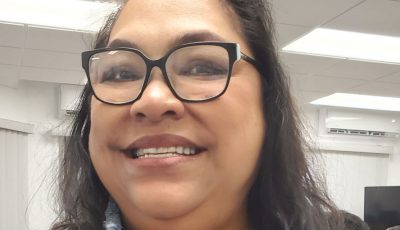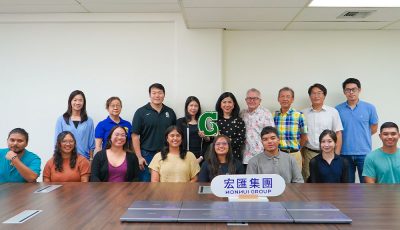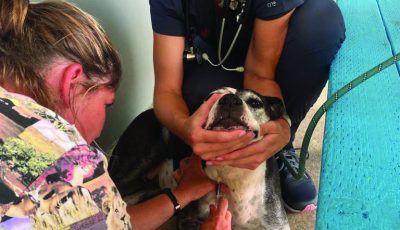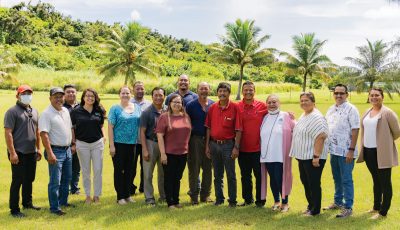Contrasting views on BSI plan for Garapan land
The public heard Best Sunshine International, Ltd.’s “archaeological data recovery project” plans for its proposed site in Garapan on Monday night at the Pedro P. Tenorio Multi-Purpose Center in Susupe.
CNMI regulatory officials must approve the site permitting before the dig can begin. This would be separate and prior to an approval or building of Best Sunshine-owned infrastructure.

“Not that site, please!” Jose Kaipat makes a point at Best Sunshine CEO Mark Brown, not seen in photo, during a public hearing Monday night. Best Sunshine’s proposed archaeological data recovery project is on grounds that Kaipat believes to be a burial site for ancient Chamorros and Carolinians. (Dennis B. Chan)
Business leaders, attorneys, lawmakers, and education officials were present at the packed hearing.
A majority of those who spoke supported the proposal. One couple notably engaged in a back and forth between comments, taking the microphone to argue their cause several times.
Businessman Alex Sablan supported the project and “anticipated the recovery of different artifacts.” It would be an “opportunity to see” and showcase Chamorros with this project.
Speaking in Chamorro, a woman testified against the BSI proposal. She urged respect of the burial sites, to “let them rest.”
“If you want to dig, start with your mother’s burial grounds,” she said.
BSI CEO Mark Brown acknowledged her concerns for cultural sites but noted that he has observed squatters defecating in the area.
“People are going to the bathroom [there]. I want to take care” of the area, he said.
He said they don’t know what they are going to find but assured they would “honor, recover, and care” for whatever is found.
Richard U. Hofschneider said it is time for locals to stand up, pointing to Hawaii where there are parks honoring their native leaders.
“Mr. Brown, build a museum for us,” he said.
Sen. Sixto Igisomar (R-Saipan), who is a former Lottery Commission chair, spoke as a public citizen in favor of the project.
House Speaker Joseph Leon Guerrero (Ind-Saipan) asked Historic Preservation officer Eric Lash about the “over 200 remains and countless artifacts” discovered in a previous study.
He said the two different sets of data have to be reconciled, to ensure all the data is analyzed together and “not in pieces.”
Soon after, Michael A. Fleming, principal investigator of the previous study, spoke up. He said he has been paying rental for the last 15 years for the storage of the human remains he had found. He said they already had done work on 90 percent of the property that is public.
He urged Brown to come to the “negotiation table” to address the 200 remains he had found. He said he would only need “few hundred thousand” to complete his work. He said he was “not asking for a job.” He said he kept the remains for the last 15 years, out of faith that “this property is prime.”
“This information is not for free,” he added.
Brown said in an interview after the hearing that it was “very interesting” but they haven’t been able to substantiate Fleming’s claims yet.
“We will follow up to see if it is real. And there is no reason why we can’t work something out. Like I said, it’s the first that I’ve seen him, hearing him, and what he’s done in the past, so I’m…a little curious why he just showed up at the hearing. It’s the first time I’ve heard his name or his work in the past,” he said.



























